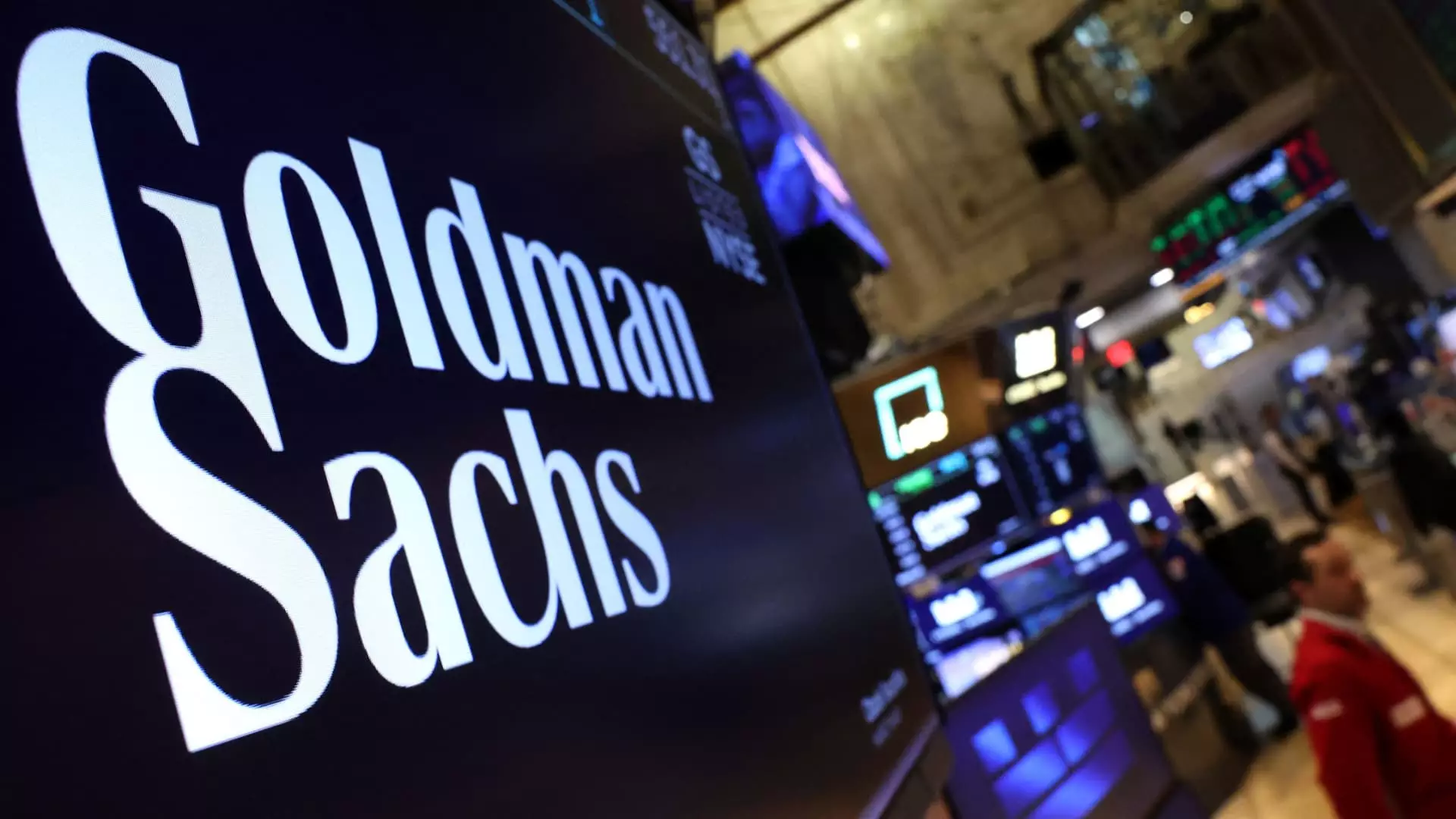The recent announcement by Goldman Sachs and Bank of New York Mellon heralds a new chapter in the evolution of financial markets — the tokenization of money market funds. At first glance, this development appears to be an exciting stride toward modernizing an age-old industry. However, beneath the glossy veneer lies a complex web of promises that may ultimately serve the interests of powerful financial conglomerates rather than genuine innovation or investor benefit. The ostensible benefits of frictionless transactions and real-time settlement are seductive but deserve a healthy dose of skepticism.
While the concept of turning traditional short-term debt instruments into digital tokens might seem to democratize access or increase efficiency, it risks merely repackaging existing market mechanisms in a shiny new shell. The reality is that a significant portion of this “progress” caters primarily to institutional intermediaries—those who stand to gain the most from reduced transaction costs and increased control over the flow of capital—rather than retail investors or the broader economy. What is truly happening here is a consolidation of power within the financial elite, cloaked in the language of technological disruption.
The Myth of Elimination of Market Frictions
Many of the touted advantages focus on reducing market frictions—speedy, seamless transactions that bypass traditional delays. But these supposedly revolutionary features ignore the deep-rooted issues endemic to our financial system, such as systemic risk and transparency concerns. Digital tokens do not inherently address the opacity or the speculative nature that can still pervade even the most innovative financial products.
Moreover, transforming money market funds into tokens doesn’t necessarily make them safer or more transparent in a practical sense. The underlying assets—short-term securities—are still subject to market risk, credit risk, and liquidity constraints. The shift to blockchain merely digitizes ownership records. It doesn’t eliminate the possibility of systemic collapses, nor does it inherently make these funds more resilient or less susceptible to the broader economic shocks that threaten to destabilize markets.
The Danger of Digitalization as a Power Play
Behind the noble aim to modernize the infrastructure of cash management lies a more insidious possibility: digitalization as a tool for greater control. By tokenizing billions in money market assets, major players like Goldman and BNY Mellon gain unprecedented oversight and the ability to transfer ownership instantaneously within a closed digital ecosystem. While this streamlines operations, it also concentrates leverage within the existing power structures, marginalizing smaller investors or regulatory oversight.
Furthermore, the supposed promise of seamless, real-time settlement can hide the potential for increased systemic risk. If these digital tokens are used as collateral or for margin calls in the financial plumbing, any disruption or vulnerability could cascade far more rapidly than in traditional markets. The allure of efficiency masks the underlying risk of a hyper-connected, digital-first financial environment that could amplify, rather than contain, a future crisis.
Profit Over Progress: The Real Agenda
It’s crucial to recognize that the primary beneficiaries of these innovations are the large financial institutions and their elite clientele. These market giants are deploying blockchain technology as a means to enhance their dominance, reduce operational costs, and facilitate high-volume trades that generate hefty fees. The broader economy, including everyday investors, will likely see little tangible benefit; instead, they face the risk of being spectators in a game rigged to favor Big Finance.
The narrative of innovation is being weaponized to justify broader acceptance of digital assets, stablecoins, and tokenized securities, which may well serve as tools for financialization rather than genuine empowerment or stability. As history has shown, technological advancements in finance often deepen existing inequalities rather than mitigate them. What is dubbed as “revolution” could simply be a calculated move to entrench the power of the financial aristocracy under the guise of modernization.
A Critical Perspective on the Future of Digital Money Markets
Looking beyond the hype, it becomes evident that tokenized money market funds may do little to alter the fundamental dynamics of our financial system. Their potential to reshape cash management and liquidity is impressive on paper, but the risks and motives behind these “innovations” merit caution. As institutions push ahead with these projects, the question remains whether this is a genuine step toward a fairer, more efficient financial system or merely an elaborate façade designed to sustain the status quo.
The core issue lies in whether technological progress is guided by the common good or by entrenched power interests. Without robust regulations, transparency, and accountability, the digitization of money market funds risks turning into another tool for financial domination, unchecked and unchecked. Progress should be judged not only by technological sophistication but by its capacity to serve society broadly, rather than reinforcing existing inequalities under the guise of innovation.

